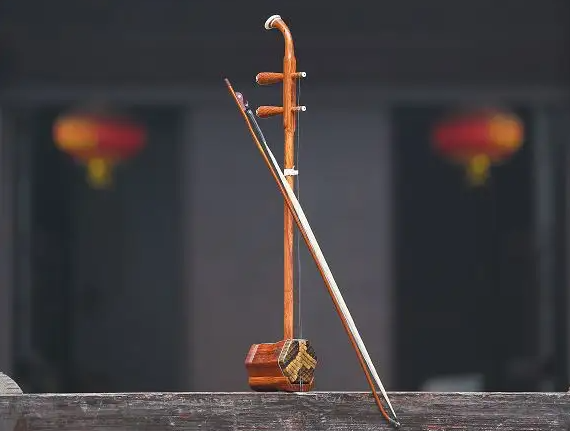Correct steps for erhu tuning
Intonation is one of the most important aspects of learning erhu performance. On the one hand, beginners need to receive strict auditory training to be able to sing and listen accurately to the pentatonic and heptatonic scales of various keys. At the same time, they also need to work hard to learn the key of the erhu. Tone method, gradually achieve self-tuning and accurate.

The first step in erhu tuning, roughly
The a sound (440HZ) of a small group of small characters is used as the standard sound, which is also the 5 so sound in the key of D.
Listen carefully to the standard tones, repeatedly listen, identify, and identify the difference between the outer strings of the erhu and the standard sounds. Is it higher or lower? Or is it about the same? Tighten the strings if it’s low, loosen the strings if it’s high), don’t rotate too much, listen and tune while pulling (try to lengthen the slow bow) and gradually tune the outer strings to a pitch equal to the standard pitch , (at least the sound that I think sounds similar). Then use the standard sounder and use the same method to tune the inner string to the D tone, which is the 1 do tone of the D key.
This process is more important, it is to use the ear to listen carefully, to learn to analyze the pitch, so it must be mastered. The inner and outer strings are repeatedly debugged. Until I thought that the pitch of the erhu was coordinated with 1 5, and it was the same as the articulator. This process will be better if there is a teacher to guide.
If there is no standard tone for reference, then tuning the inner and outer strings of the erhu to a perfect fifth relationship 1 5 is harmonious, and the tune will not be too unpleasant. If the perfect fifth relationship doesn't hold, no matter how accurate the finger is, it will definitely be unpleasant to pull out... (unless you are playing solo)
The second step of erhu tuning, fine tuning
Select the mode of the electronic tuner as "Erhu Tuning Mode", put it near the erhu drum, and then pull the slow bow of the outer string with a relatively uniform strength (the attention should be controlled well, too weak or too strong will affect the Tuning) Look at the pointer or indicator light of the tuner while pulling it. The needle swings left and right on the meter according to subtle changes in the sound. When the pointer is between 0 and -50, the red light is on, indicating that the sound is low; when the pointer is between 0 and +50, the red light is on, indicating that the sound is high; when the pointer is in the middle of 0, the green light When it is on, it means the sound is accurate.
The premise is: when the tuner is on green light, it also displays A2 (automatically generated). If not, it means that the "rough adjustment" of the first step has not yet reached the standard. That is, even the approximate pitch has not been tuned, please go back to the first step and listen carefully.
The tuning method of the inner string is the same as that of the outer string. When the tuner lights up the green light, it will display D1 at the same time.
If the pointer points to within +-5, it means that the difference in tone is not big. If you use the erhu peg to tune, the rotation of the peg is too large, sometimes it is too high, sometimes too low, and it will not be well tuned for a long time. . At this time, a "spinner" is needed, which is a small metal device installed under the erhu shaft. Very accurate fine-tuning is possible to achieve precise requirements.
Repeatedly check the inner and outer strings until the perfect fifth relationship between inner D and outer A is established.
It is very accurate to use a tuner to tune the sound. If you are in a formal orchestra, a tuner is definitely a must. All the orchestra members have to tune the sound accurately is the premise of performance.
 渝公网安备 50010702504639号
渝公网安备 50010702504639号